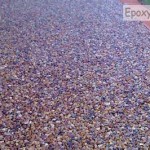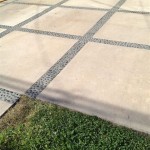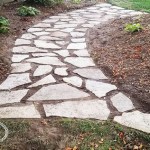How To Clean Patio Slate: A Comprehensive Guide
Slate patios are a popular choice for homeowners due to their durability, natural beauty, and resistance to the elements. However, even the most resilient materials require regular cleaning to maintain their appearance and prevent the buildup of dirt, grime, algae, and other unsightly substances. This article provides a detailed guide on how to effectively clean a slate patio, covering everything from preventative measures to specific cleaning techniques for various types of stains and soiling.
Before embarking on any cleaning project, it's crucial to understand the specific type of slate your patio is made from. Slate varies in composition and porosity, which can affect its susceptibility to staining and the appropriate cleaning methods to use. Some slates are more porous than others, making them more prone to absorbing liquids and harboring dirt. Consulting with the manufacturer or installer of your patio can provide valuable information regarding the specific characteristics of your slate.
Furthermore, understanding the type of sealant (if any) applied to your slate is essential. Many slate patios are sealed to protect them from moisture and staining. Using the wrong cleaning products can damage the sealant, rendering it ineffective and potentially harming the slate itself. If you are unsure what sealant has been applied, it is best to test any cleaning solution in an inconspicuous area before applying it to the entire patio.
Preventative Measures for a Cleaner Slate Patio
The most effective way to keep a slate patio clean is to implement preventative measures that minimize the accumulation of dirt and grime. By taking proactive steps, the frequency and intensity of cleaning sessions can be significantly reduced.
Regular sweeping is paramount. Using a broom with stiff bristles, sweep the patio regularly, ideally once a week or more frequently in areas with heavy foot traffic or exposure to debris. This removes loose dirt, leaves, and other organic matter before they have a chance to become embedded in the slate surfaces.
Rinsing with water is another simple yet effective preventative measure. Periodically rinsing the patio with a garden hose helps to dislodge surface dirt and grime before they can accumulate. This is particularly useful after rainstorms or periods of high wind, which can deposit significant amounts of dirt and debris onto the patio surface.
Using mats and rugs at entry points can significantly reduce the amount of dirt tracked onto the patio. Placing mats inside and outside doors leading to the patio helps to capture dirt and debris from shoes and pets' paws, preventing them from being spread across the slate surface. Choose mats and rugs made from durable, weather-resistant materials that can withstand outdoor conditions.
Controlling vegetation growth around the patio is crucial for maintaining its cleanliness. Weeds and other plants growing near the patio can contribute to the buildup of dirt and debris and potentially damage the slate. Regularly trim back vegetation and use a weed preventer to inhibit growth in cracks and crevices.
Finally, addressing spills promptly is essential. Accidents happen, and spills of food, drinks, or other substances are inevitable. Clean up spills immediately with a clean cloth or sponge to prevent them from staining the slate. The longer a spill sits on the surface, the more likely it is to penetrate the slate and cause a permanent stain.
Cleaning Techniques for a Slate Patio
When preventative measures are not enough, or when the patio has become heavily soiled, more thorough cleaning techniques are required. Several methods can be effectively used to clean a slate patio, ranging from gentle solutions to more aggressive approaches for stubborn stains.
The simplest and often most effective method is to use a mild soap and water solution. Mix a small amount of dish soap or a pH-neutral cleaning solution with warm water. Apply the solution to the patio surface using a mop or sponge, scrubbing gently to loosen dirt and grime. Rinse thoroughly with clean water to remove any soap residue. Avoid using harsh detergents or abrasive cleaners, as these can damage the slate or its sealant.
For more stubborn dirt and grime, a pressure washer can be used with caution. While pressure washing can be an effective way to clean large areas quickly, it is crucial to use a low-pressure setting (ideally under 1200 PSI) and a wide-angle nozzle to avoid damaging the slate. Hold the nozzle at a safe distance from the surface and move it in a sweeping motion to prevent concentrating the pressure in one area. Always test the pressure washer in an inconspicuous area first to ensure that it does not damage the slate. Avoid using pressure washers on older, more fragile slate patios.
For organic stains such as algae, mildew, or mold, a solution of bleach and water can be used. Mix one part bleach with ten parts water. Apply the solution to the affected areas using a spray bottle or sponge, allowing it to sit for several minutes. Scrub gently with a brush to remove the stain, and then rinse thoroughly with clean water. Exercise caution when using bleach, as it can discolor some types of slate. Always wear gloves and eye protection when working with bleach solutions. Outdoor bleach products are available in liquid concentrate, which is mixed with water to make a diluted cleaning solution. Follow the instructions on the package.
For oil or grease stains, a poultice can be used to draw out the stain. A poultice is a thick paste made from an absorbent material, such as baking soda, diatomaceous earth, or clay powder, mixed with a solvent that dissolves the stain. Apply the poultice to the stain, cover it with plastic wrap, and allow it to sit for 24-48 hours. The poultice will draw the stain out of the slate. Remove the poultice and rinse the area thoroughly with clean water. Repeat the process if necessary.
For rust stains, specific rust removers designed for stone surfaces can be used. These products typically contain oxalic acid or other chemicals that dissolve rust. Apply the rust remover according to the manufacturer's instructions, and rinse thoroughly with clean water. Exercise caution when using rust removers, as they can be corrosive. Always wear gloves and eye protection when working with these products.
Sealing and Maintenance for Long-Term Protection
After cleaning a slate patio, consider applying a sealant to protect it from future staining and damage. Sealing the slate helps to prevent water and oil from penetrating the surface, making it easier to clean and maintain. It also enhances the natural color of the slate and provides a protective barrier against the elements.
Choosing the right sealant is crucial. There are various types of sealants available, including penetrating sealants and topical sealants. Penetrating sealants soak into the slate and provide protection from within, while topical sealants form a protective layer on the surface. The choice of sealant depends on the type of slate and the desired level of protection. Consult with a stone care professional or the manufacturer of your slate to determine the best sealant for your patio.
Before applying the sealant, ensure that the patio is completely clean and dry. Follow the manufacturer's instructions for applying the sealant, which typically involves using a brush, roller, or sprayer. Apply the sealant evenly and allow it to dry completely before using the patio. Most sealants require multiple coats for optimal protection.
Regular maintenance is essential to prolong the life of the sealant and maintain the appearance of the slate patio. This includes sweeping regularly, rinsing with water, and cleaning up spills promptly. Reapply the sealant every one to three years, or as recommended by the manufacturer, to maintain its effectiveness. The frequency of reapplication depends on the type of sealant used and the level of exposure to the elements.
Winter precautions are also important. In cold climates, slate patios can be susceptible to damage from freezing and thawing. Avoid using de-icing salts on the patio, as these can damage the slate and its sealant. Instead, use sand or gravel to provide traction on icy surfaces. Remove snow promptly to prevent it from accumulating and freezing.
By understanding the specific characteristics of your slate, implementing preventative measures, using appropriate cleaning techniques, and applying a sealant, you can effectively clean and maintain your slate patio, ensuring that it remains a beautiful and durable outdoor space for years to come.

How To Clean A Slate Patio Guide Cleaning External By Floorseal

Cleaning Slate On A Client S Patio Youtube

3 Ways To Clean A Stone Patio Wikihow

Cleaning Slate Tile Tss Pro Sealants

How To Clean Patio Slabs

How To Clean Seal An Interior Slate Floor A Guide Internal Care

How To Clean Slate Patio Quick Effortless Tips Campaign

3 Ways To Clean A Stone Patio Wikihow

How To Clean Paving Patios A Comprehensive Guide Awbs

Best Products For Cleaning Outside Tile And Stone Patios Chet S
See Also








